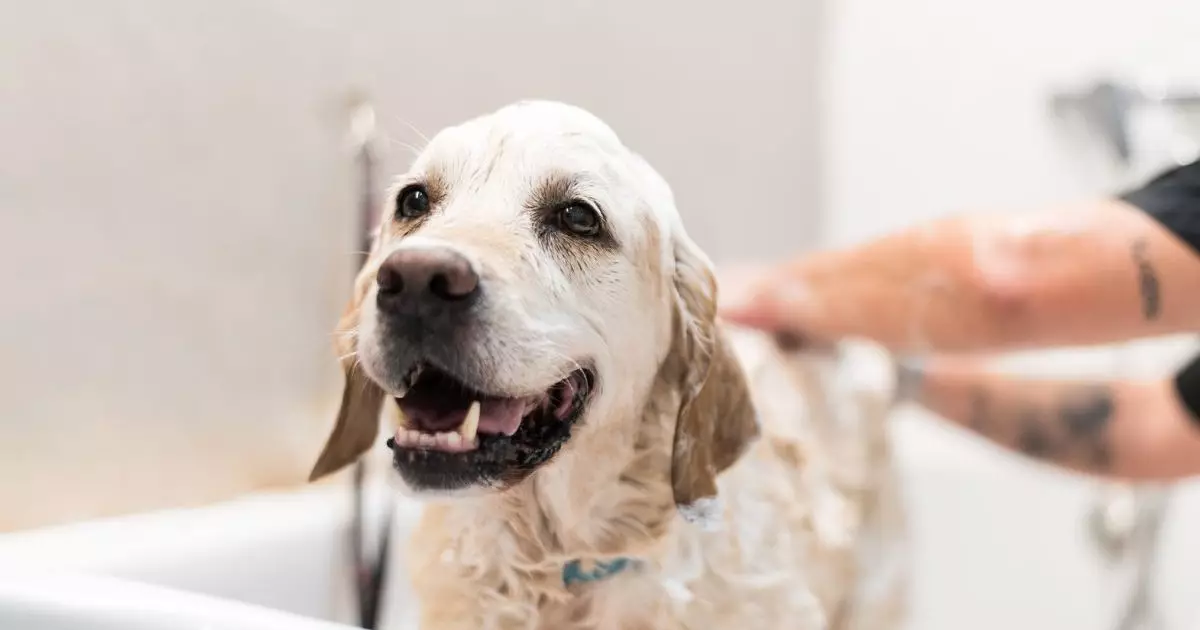Maintaining your dog’s hygiene is crucial for their overall health and well-being. While your furry friend may dread bath time, the importance of regular bathing cannot be overstated. Not only does bathing help rid your dog of dirt, parasites, and odor, but it also contributes to healthy skin and coat. In this article, we will explore the best practices for bathing your dog, addressing common concerns and providing helpful tips to make the experience smoother for both you and your pet.
Bathing frequency can vary significantly depending on numerous factors, including the dog’s breed, coat type, and lifestyle. Contrary to popular belief, dogs do not require baths as frequently as humans do. However, this does not mean that bathing can be entirely overlooked. Most dogs benefit from a monthly bath, though certain breeds may necessitate more frequent care.
For instance, dogs like Basset Hounds with oily coats may need a bath once a week, while short-haired breeds like Beagles may require less frequent cleaning. On the other hand, breeds with water-repellent coats, such as Golden Retrievers, should be bathed sparingly to preserve their natural oils. Understanding your dog’s specific needs and consulting with a veterinarian can help you determine the best bathing schedule for your four-legged friend.
A dog’s coat type plays a significant role in dictating the bathing routine. Thick, double-coated breeds, such as Samoyeds or Malamutes, usually require fewer baths but benefit from regular brushing. Brushing not only removes loose hair but also aids in distributing natural oils throughout the coat, promoting healthy skin. It’s essential to familiarize yourself with your dog’s coat type and to adapt your grooming strategies accordingly.
Moreover, factors such as your dog’s environment can further influence the need for baths. Country dogs that frequently roll in dirt or mud may require more frequent washing than their counterparts living in cleaner, urban environments. While keeping your dog clean is important, excessive bathing can strip their coat of essential oils, causing dryness, irritation, or other skin problems. Thus, careful consideration must be given to your dog’s individual lifestyle.
The Bathing Process: Preparation is Key
Before diving into the bathing process, proper preparation can make all the difference. Begin by brushing your dog to remove any tangles or mats, as matted hair can trap water and lead to skin irritation. It’s advisable to use lukewarm water for baths because dogs are more sensitive to temperature changes than humans. The ideal water temperature should feel comfortable for a baby.
As you prepare to bathe your dog, creating a calm and reassuring environment is crucial. Some dogs may feel anxious about bath time, so talking softly to them can help relieve anxiety. If your dog is particularly fearful, consider a gradual introduction to the bath, allowing them to explore the area before the actual washing begins.
Choosing the Right Products
Using the correct shampoo is vital for your dog’s skin health. Human shampoos often contain chemicals that can irritate dog skin, so it’s crucial to choose a dog-specific shampoo. When applying shampoo, work it into a gentle lather, avoiding contact with the eyes and ears. Remember to rinse thoroughly, as leftover soap can cause dryness and irritation once the dog dries.
After rinsing, let your dog air-dry or consider using a dog-specific blow dryer designed to maintain a safe temperature. It’s essential to avoid human blow dryers, as the heat may be harmful to your pet’s skin.
Post-Bath Care and Benefits
Once the bath is complete, reward your pet for their cooperation with plenty of praise and affection. Positive reinforcement can lead to a more enjoyable bath time experience in the future. Some dogs might express their delight by engaging in playful behavior, which can help alleviate any residual tension from the experience.
For owners who find themselves wrestling with a reluctant dog during bath time, consider the option of professional grooming services. Groomers possess the skill and equipment to handle even the most bath-averse dogs, providing additional services like nail clipping and ear cleaning. Furthermore, certain breeds with long hair require specialized grooming that professional groomers can effectively manage.
Final Thoughts
Bathing your dog is a vital aspect of pet ownership that goes beyond mere aesthetics. Regular baths contribute to your dog’s hygiene, comfort, and overall health. By understanding your dog’s unique needs and creating a stress-free bathing environment, you can ensure that bath time is a pleasant experience for both you and your pet. Remember, consultation with a veterinarian can provide personalized recommendations, ensuring that you maintain your furry friend’s health and happiness.


Leave a Reply